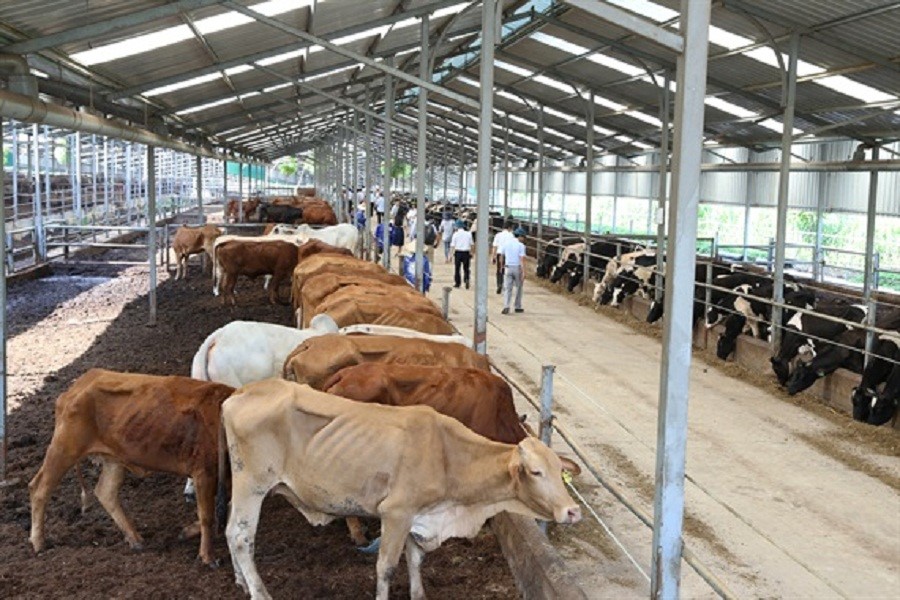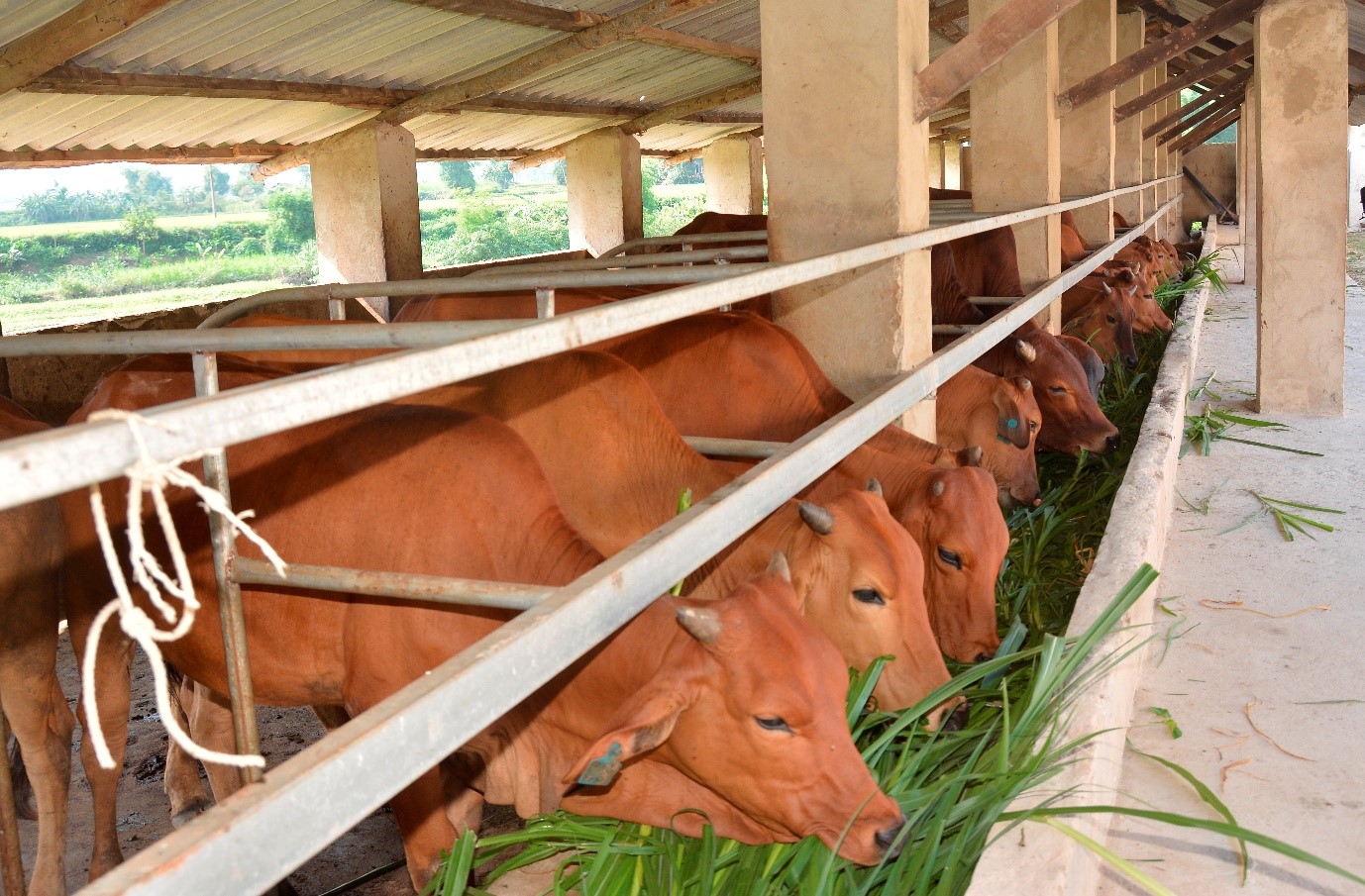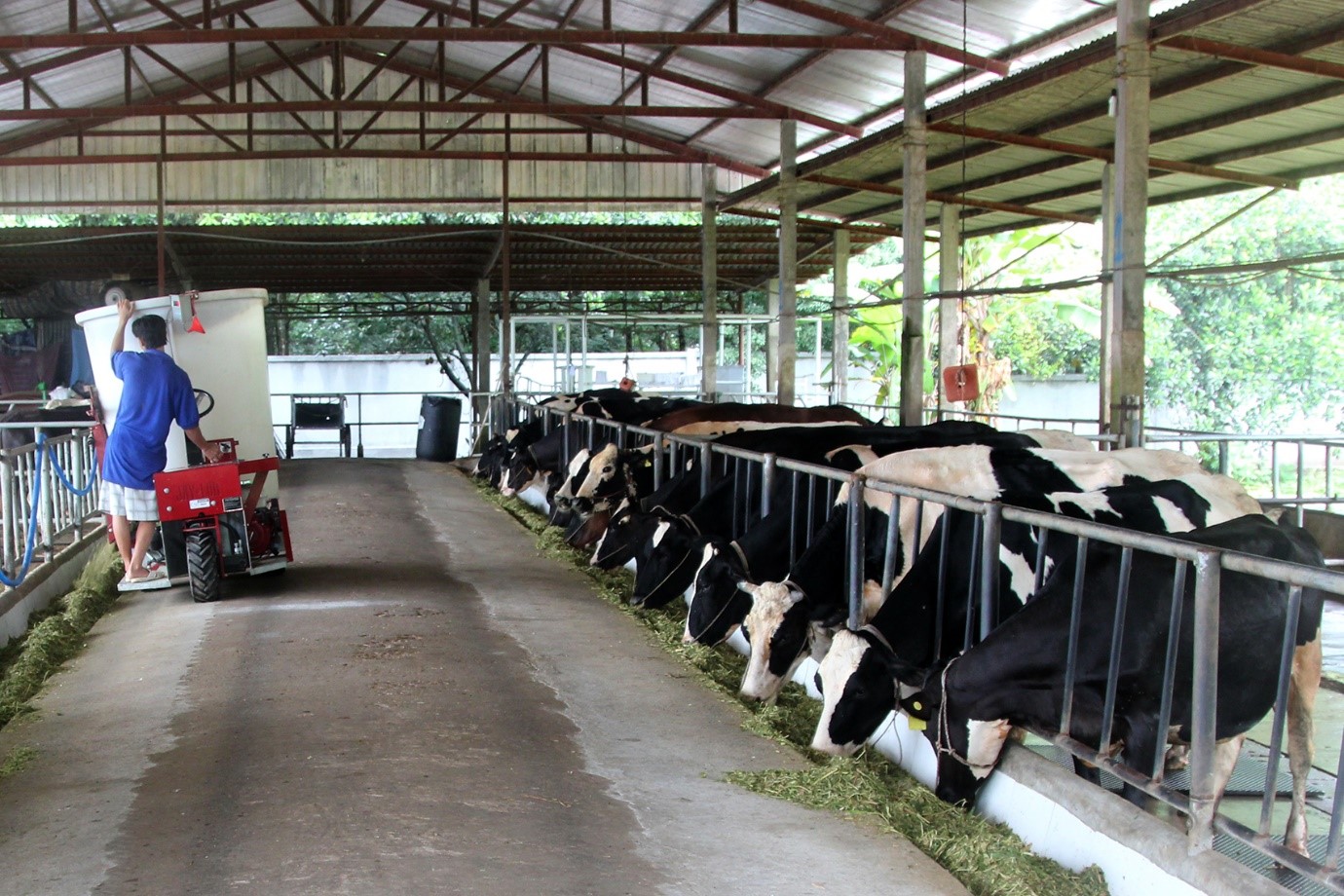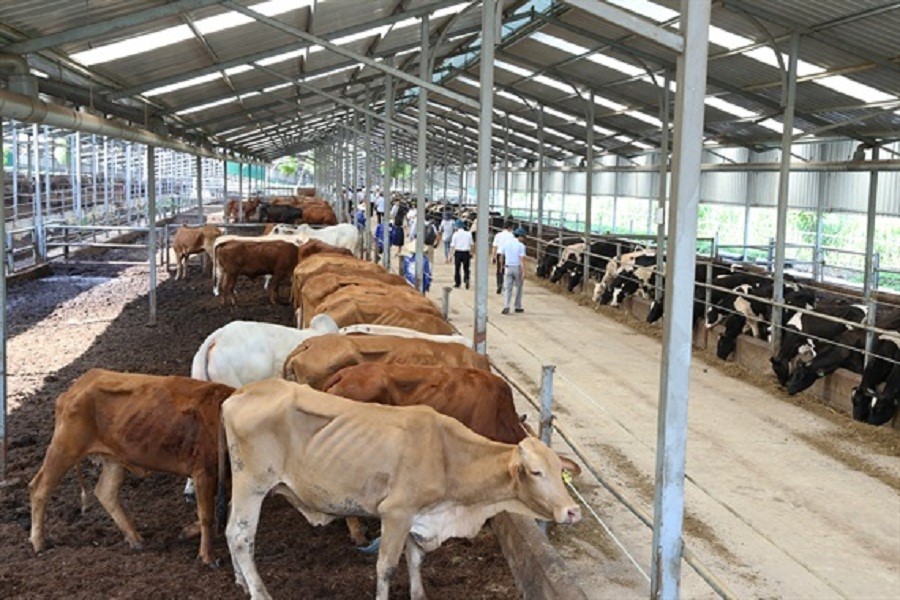The standard cow barn model helps bring high economic efficiency and sustainability from barn construction, veterinary hygiene, to cow feeding rations.
Today, while the land area is increasingly shrinking, it has caused many obstacles to grazing in the fields, so raising cows in captivity is suitable in many localities. However, in order for cattle raising in barns to bring high economic efficiency and sustainability, farmers need to grasp some basic techniques for raising cattle in barns.
1. ABOUT THE CAGES
The goal of building barns is to facilitate the management of cows, raise them, and have a successful beef cattle farming model.
Farmers should build cow barns in clean, high places that are cool in the summer and warm in the winter.
The cage is built in the Southeast or South direction, the average cage area is about 3-5 m2/one. Depending on the scale, the cow barn can be built in 1 row or 2 rows. The floor of the barn must be firm, not smooth and dangerous for cows, and have a slope of 2-3% toward the drainage ditch.
Image of model of raising cows in cages
It is necessary to equip drinking troughs and feeding troughs along the corridor, the size of the trough is 60 cm x 120 cm, 50 cm high in front, 80 cm high in back, the inside of the trough is shaped like a cavity. Drinking trough dimensions are 60 cm x 60 cm x 40 cm.
The wastewater drainage ditch designed at the back is 30 cm wide and 30 cm deep, with a slope of 5-8%. In addition, it is necessary to arrange additional biogas tanks or compost pits, a curtain system 1-1.5m away from cows, and build a system of trees to prevent heat for cows in the summer.
2. REGARDING VETERINARY HYGIENE
Detoxify, disinfect and clean barns
Firstly, Preventive hygiene
– People should follow the motto “prevention is better than cure”. Cleaning the cow barn is extremely important. Barns, feeding troughs, watering troughs and the environment around the cows must always be clean. Periodically disinfect the barn and the area around the barn, clear dust banks, clear drains, and collect and treat waste around the barn. Regularly kill insects, rats, flies and mosquitoes, etc. to minimize intermediate pathogens that harm the cows.
– Sources of feed, and drinks must be clean and safe.
– It is necessary to regularly check and monitor the herd. When there are unusual signs or signs of illness, it is necessary to promptly intervene.
– Vaccinate cows regularly or disease-preventing drugs.
– After leaving the barn, all animals must be disinfected and cleaned according to general cleaning procedures before starting to raise new litters.
– In cases where livestock die from disease in the barn, disinfection must be carried out immediately according to veterinary instructions.
– Use some antiseptic products such as: Iondin @, Dexon super or Belucid
Image of model of raising cows in cages
Secondly, Removing parasites for cows:
To have a healthy cow farming model, farmers periodically use parasite-removing drugs for cows such as Tryponil or Tryponil super.
3. REGARDING COW DIET
For cow farming model to develop quickly, the amount of feed that needs to ensure high energy and must be fed daily is 2.5% of body weight.
For example, a 200kg cow needs about 5kg of dry matter per day, and about 15 – 20kg of roughage. A complete ration contains all the nutrients the cow needs. The cow is then free to choose after completely mixing both concentrate and roughage together.
Image of model of raising cows in cages
This feeding method and training cows to eat concentrates are extremely important. At first, we should feed the cows a lot of green forage and little concentrate to help the cows get used to the high-energy diet. If cows are fed a lot of concentrate from the beginning, they can die from acid poisoning. Forage needs to be used in combination with concentrates to create a complete and balanced diet.
Farmers supplement their cows with some amino acids and minerals in their food by giving them one of the following products: Topmix for cow, Aminogrow oral, Stimosol oral.
Through the information about the model of raising cows according to technical standards, farmers can raise them more effectively and save money.




